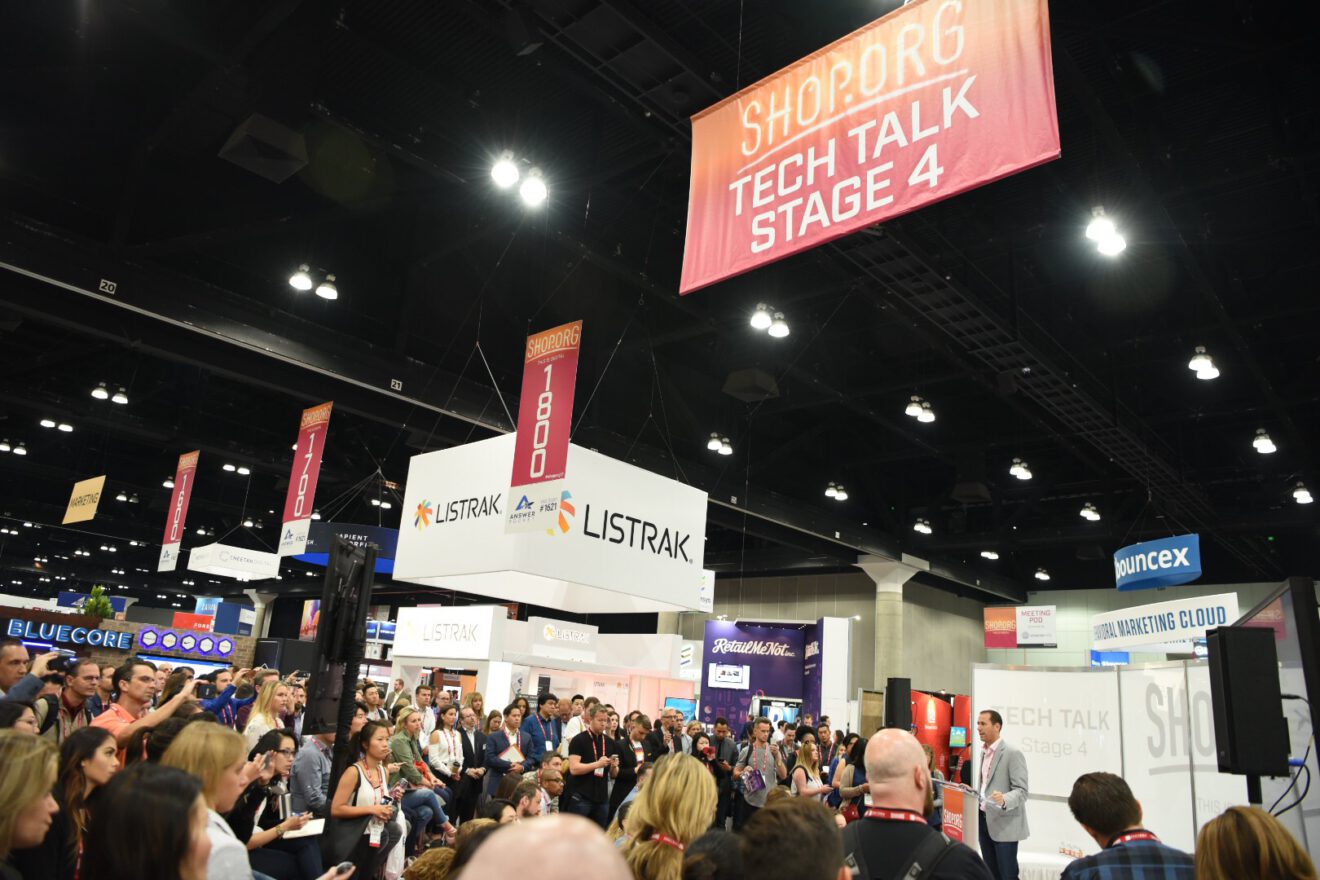With thousands of digital retail executives and thought leaders in attendance, the National Retail Federation’s annual Shop.org conference in Los Angeles was a showcase for the hottest trends in consumer technology. From exhibitors in action, to the show’s Tech Lab that brought some of retail’s most innovative tools together, to Tech Talk sessions on the expo floor, retail’s next wave of technology was on display — and it was hard to miss some of the emerging themes:
Amazon everything
It should come as no surprise that Amazon was among the most-talked-about companies at the show.
Tim Wilson of 1010data took attendees on a deep dive into the online retail giant’s recent purchase of specialty grocer Whole Foods Market. By looking at a combination of different sets of behavioral-based consumer data, he broke down some of the strategy behind the merger.
Every company’s goal is to make more money, which Wilson said usually happens in one of two ways — you get new customers, or you find ways to get your existing customers to spend more money. As the fourth-largest player among major grocers in the US, Whole Foods made an attractive acquisition target for Amazon, who has the opportunity to target both methods of growth, according to the data.
Wilson said his company found that 5% of Whole Foods shoppers, who tend to be affluent, have never shopped on Amazon, likely making the opportunity to gain new customers a big part of Amazon’s strategy. Additionally, almost half of Whole Foods shoppers are not currently members of Amazon’s Prime subscription service, and converting those shoppers to Prime members would greatly benefit Amazon, he said. But the benefits also extend to Whole Foods.
According to 1010data’s research, Prime members spend more than $300 more per year at Whole Foods stores than non-Prime members, which is an example of how the Amazon-Whole Foods deal will facilitate further growth by getting the companies’ existing customers to spend more money. Additionally, the data revealed that Whole Foods shoppers have grown their spend at Amazon by more than 60% in the last year.
“Whole Foods offers a phenomenal opportunity for amazon to start getting more dollars out of their existing customers,” he said.
Wilson also pointed out that Amazon gets 17% of its sales from its top 10 markets, which turned out to have a significant overlap with Whole Foods’ major markets. And the partnership also gives Amazon the opportunity to capitalize on Whole Foods’ already successful private-label strategy, and the grocer’s stores, which will likely be used for fulfillment of online grocery orders, he said.
“[Amazon] bought Whole Foods because there’s a lot of data that adds up,” he said.
For online retailer JustFab, Amazon presents a new reason to up its game when it comes to offering a personalized shopping experience for its customers, JustFab’s Monica Deretich said at Shop.org. She talked with Sailthru’s Jason Grunberg about her company’s No. 2 ranking on Sailthru’s personalization index of 100 retailers, on which Amazon came in at No. 17.
“If I can use personalization across all our marketing channels, that would be my ideal,” Deretich said.
JustFab strives to offer the feel of a small boutique in an online setting, a personalization strategy that Deretich called the company’s “north star.” For the retailer, personalization is about more than just marketing — it’s part of the JustFab brand and the JustFab platform, and it’s threaded through merchandising, operations, business development, market research and every other facet of the business that touches the customer experience, Deretich said.
“It’s not a one-team focus, it’s a company-wide buy-in,” she said.
What Sailthru found in its research on personalization was that while Amazon focuses more on getting their customers to make purchases, JustFab and other retailers who scored higher on the index focus on figuring out what’s unique about their brands and what’s unique about their customers, Grunberg said.
“We want to understand a little bit more so we can have a long-term relationship with our customer,” Deretich said.
Enhancing personalization through artificial intelligence
Personalization was also a common theme throughout the Shop.org show, especially personalization perfected by artificial intelligence and other machine learning technologies.
At women’s fashion retailer Lulus, Marketing Vice President Noelle Sadler and her team have worked to develop a highly personalized digital shopping experience by teaming with Certona and using AI technology to gather intelligence about its customers.
Adobe’s Michael Klein talked to attendees about AI’s role in becoming a personal shopper for today’s customers and using that AI-driven personalization to increase sales.
Strengthening the digital customer experience
And, of course, at the center of retail lies customer experience — another theme seen throughout Shop.org this year.
When it comes to the digital customer experience, Yes Lifecycle Marketing’s Marc Shull said that big data holds the key to collecting shopper insights and then using those insights to offer a relevant and engaging shopping experience.
ContentSquare’s Patricia Cesaire and Efrat Ravid talked about the concept of mindset in the digital retail world, and how that plays into optimizing the customer experience. Through a tech platform that gives retailers an overview of context, emotion and other factors that play into the e-commerce buying experience, brands can get a full picture of their shoppers and cater to that.
